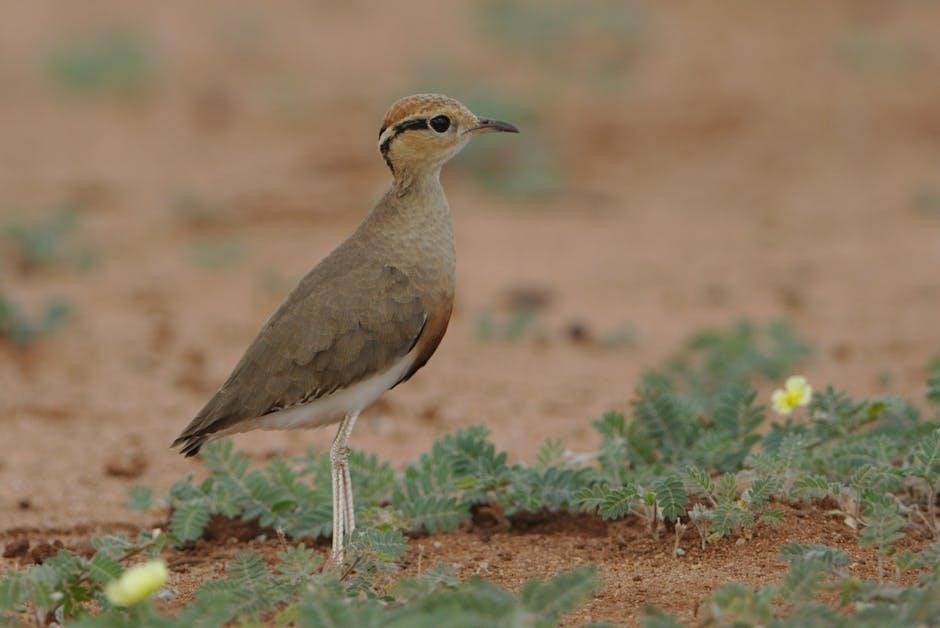Pennsylvania offers a rich birdwatching experience, with over 435 species documented. From the iconic Peregrine Falcon to the vibrant Blue Jay, the state’s diverse habitats attract a wide variety of birds. A reliable field guide is essential for identifying species and enhancing your birding adventures across Pennsylvania’s scenic landscapes.
Overview of Bird Diversity in Pennsylvania
Pennsylvania is a haven for bird enthusiasts, boasting an impressive diversity of bird species. With over 435 documented species, the state’s varied landscapes, from lush forests to wetlands, provide habitats for a wide range of birds. Migratory routes cross the state, bringing visitors like the Western Tanager and warblers, while year-round residents include the Northern Cardinal and Blue Jay. The diversity is further enriched by birds of prey, such as the Peregrine Falcon and Bald Eagle. This rich avifauna makes Pennsylvania a prime location for birdwatching, offering opportunities to spot both common and rare species throughout the year.
Importance of Field Guides for Bird Identification
Field guides are indispensable tools for birdwatchers in Pennsylvania, offering detailed descriptions and images to accurately identify species. With over 435 documented bird species in the state, these guides help distinguish between similar birds, such as warblers or sparrows. They provide insights into habitat preferences, behaviors, and migration patterns, enhancing the birding experience. A good field guide also includes range maps, seasonal variations, and tips for recognizing distinct plumage and vocalizations. By leveraging these resources, birders can improve their identification skills and gain a deeper appreciation for Pennsylvania’s avifauna. Choosing a guide tailored to the region ensures the most relevant and accurate information for local birding adventures.
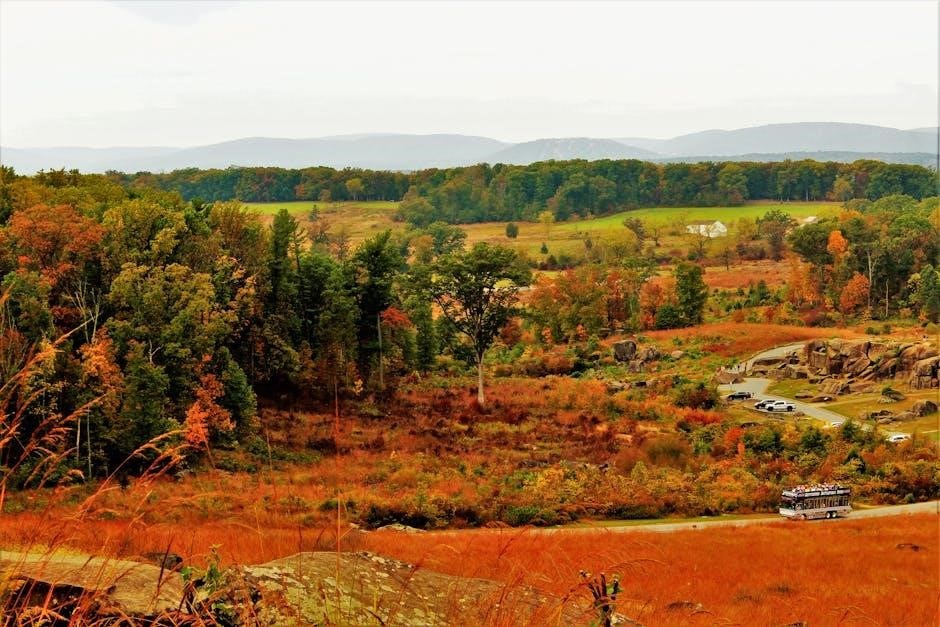
Common Bird Species in Pennsylvania
Pennsylvania is home to a variety of bird species, including the Blue Jay, American Goldfinch, and seasonal visitors like the Western Tanager, reflecting its diverse habitats.
Top 10 Most Frequently Spotted Birds
The top 10 most frequently spotted birds in Pennsylvania include the American Robin, Blue Jay, and Northern Cardinal, known for their vibrant colors and frequent visits to backyard feeders. The Black-capped Chickadee and Tufted Titmouse are also common, offering delightful views with their acrobatic feeding behaviors. Seasonal visitors like the Western Tanager and Ruby-throated Hummingbird add variety, while year-round residents such as the Mourning Dove and Downy Woodpecker provide consistent sightings. These species are easily identifiable using a reliable field guide, making birdwatching in Pennsylvania a rewarding experience for both beginners and seasoned enthusiasts. The list may vary slightly by region and season.
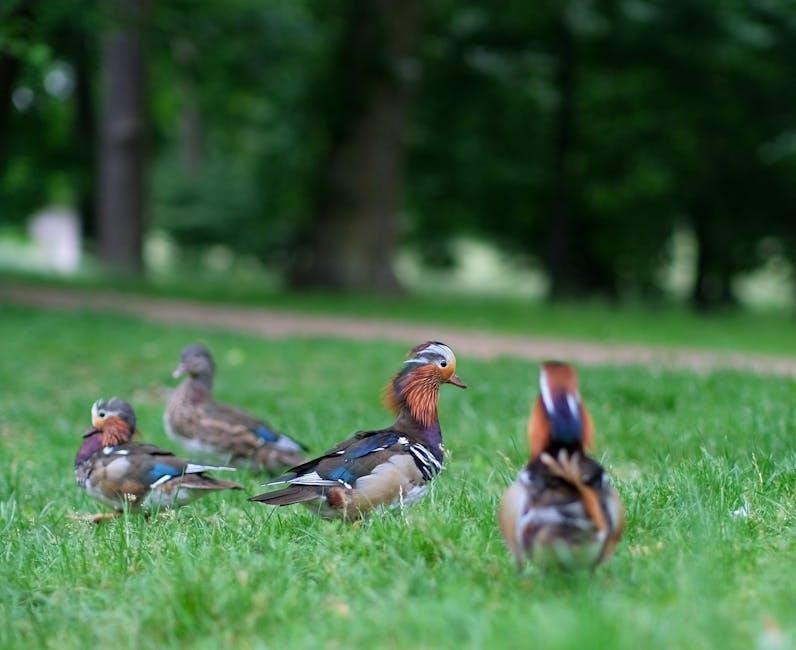
Seasonal Variations in Bird Populations
Bird populations in Pennsylvania vary significantly with the seasons, influenced by migration patterns and breeding cycles. Spring brings an influx of warblers, tanagers, and orioles, while fall sees the return of waterfowl and raptors. Summer months host breeding species like the Ruby-throated Hummingbird, while winter attracts hardy residents such as the Black-capped Chickadee and Snow Bunting. Seasonal fluctuations also depend on weather conditions and food availability. For example, the Western Tanager is abundant during spring migration but rare in winter. Tracking these changes using tools like eBird can enhance your birdwatching experience, revealing the dynamic nature of Pennsylvania’s avifauna throughout the year.
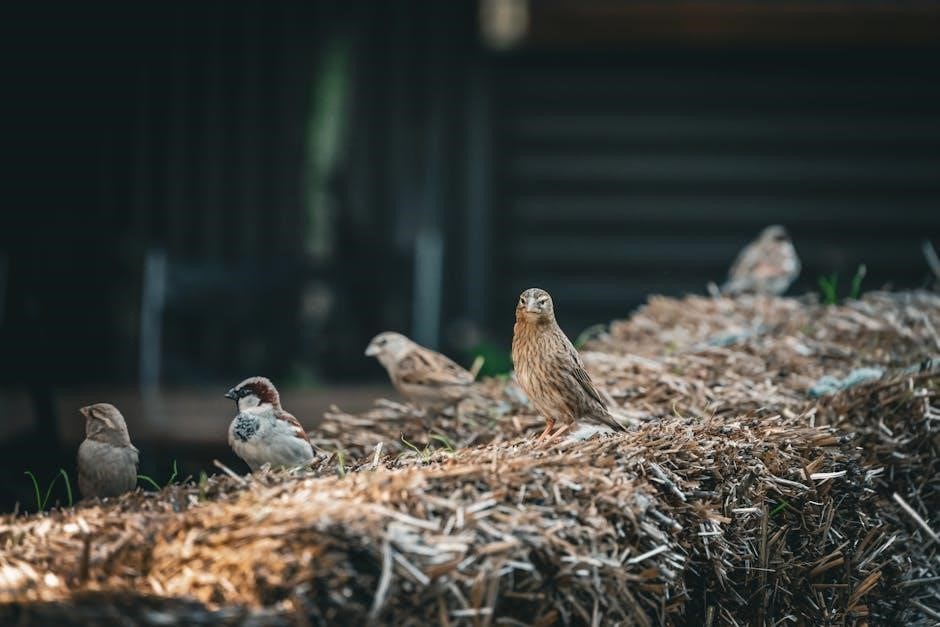
Bird Identification Tips
Identify birds by plumage details, beak shape, and size. Use field guides and apps to compare markings and behaviors. Seasonal changes can alter appearances, so stay observant always.
Key Characteristics for Accurate Identification
Accurate bird identification relies on noting key characteristics such as plumage patterns, beak shape, size, and behavior. Observe distinctive markings like wing bars or throat patches, as these often distinguish species. Beak shape can indicate diet, with seed-eaters having stubby bills and nectar feeders having long, pointed ones. Size comparisons, such as a sparrow versus a finch, also aid in identification. Seasonal changes in plumage, like the bright summer colors of the Western Tanager, can alter appearances. Behavior clues, such as tree-climbing woodpeckers or ground-foraging sparrows, further refine identification. Using field guides or apps to cross-reference these traits ensures accurate species recognition, especially for beginners learning Pennsylvania’s diverse birdlife.
Using Plumage, Beak Shape, and Size for ID
Plumage, beak shape, and size are critical for identifying Pennsylvania birds. Plumage patterns, such as the Western Tanager’s bright orange head or the Blue Jay’s distinctive crest, provide instant recognition. Beak shape reveals diet: thick, stubby beaks for seed-eaters like finches, and slender, pointed ones for nectar-feeding hummingbirds. Size comparisons, like distinguishing the smaller Ruby-throated Hummingbird from larger woodpeckers, also aid in identification; Seasonal changes, such as the American Goldfinch’s shift from bright yellow to duller winter plumage, further refine ID. By combining these traits with field guides, birders can accurately identify species, even those with similar appearances. Observing these characteristics ensures precise and enjoyable birdwatching experiences in Pennsylvania’s diverse habitats.
Habitats and Ecosystems
Pennsylvania’s diverse habitats, including forests, wetlands, grasslands, and urban areas, support a wide variety of bird species, making conservation of these ecosystems crucial for avian biodiversity.
Major Habitats Supporting Bird Life in PA
Pennsylvania’s diverse landscapes provide critical habitats for birds, including forests, wetlands, grasslands, and urban areas. Forests, such as those in the Allegheny and Pocono regions, shelter woodpeckers, owls, and warblers. Wetlands like marshes and lakes attract waterfowl, herons, and egrets. Grasslands are vital for species like meadowlarks and sparrows. Urban environments, including parks and backyards, support pigeons, sparrows, and cardinals. Each habitat plays a unique role in sustaining avian populations, highlighting the importance of conservation efforts to protect these ecosystems for future generations of birds and birdwatchers alike.
Impact of Habitat Loss on Bird Populations
Habitat loss poses a significant threat to Pennsylvania’s bird populations. Deforestation, urban expansion, and agricultural development have fragmented natural environments, reducing nesting and feeding grounds. This fragmentation disrupts breeding patterns and isolates bird communities, making it harder for species to survive. Migratory birds are particularly vulnerable, as stopover habitats shrink. Wetland drainage has impacted waterfowl, while forest clearing threatens warblers and thrushes. Conservation efforts are critical to restore and protect habitats, ensuring the survival of Pennsylvania’s avian diversity. Without action, many species face population decline, emphasizing the urgent need for sustainable land management and habitat preservation.
Birdfeeding and Attracting Birds
Birdfeeding is a great way to attract birds to your yard. Using suet and seed feeders can help support birds during migration and harsh weather conditions.
Best Practices for Bird Feeding
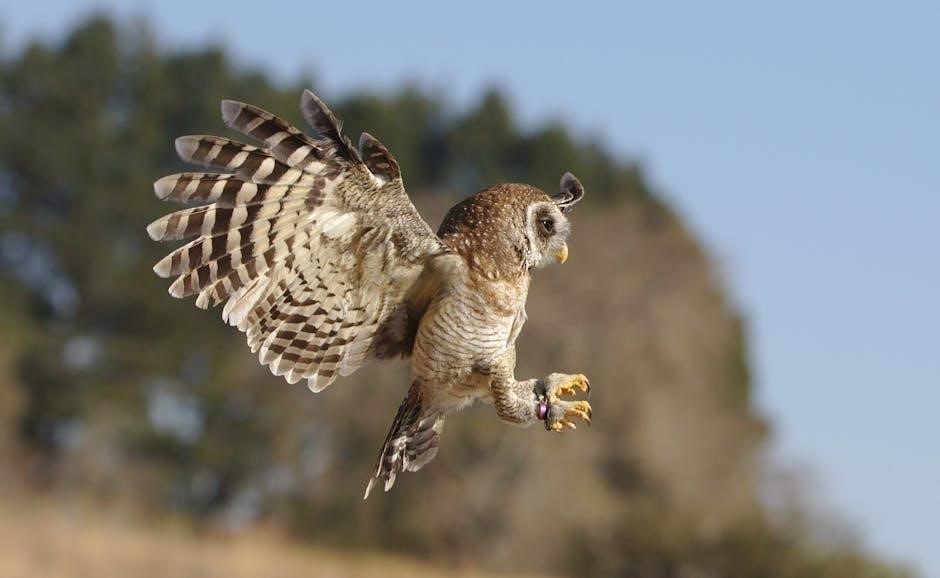
Effective bird feeding involves using high-quality seed and suet to attract diverse species. Place feeders in shaded areas to protect birds from heat and predators. Maintain cleanliness by regularly cleaning feeders to prevent disease spread. Offer water sources, like birdbaths, to complement feeding. Plant native vegetation to provide additional food and shelter. Avoid using pesticides, as they harm birds and other wildlife. Timing is crucial—feed during migration, extreme weather, and late winter when energy needs are highest. Use feeders designed for specific bird types, such as tube feeders for small birds or hopper feeders for larger species. This approach ensures a welcoming environment for Pennsylvania’s birdlife.
Recommended Foods and Feeders for PA Birds
For attracting Pennsylvania birds, offer high-energy foods like suet, sunflower seeds, and Nyjer seeds, which appeal to species such as chickadees and finches. Use tube feeders for small birds and hopper feeders for larger species. Platform feeders are ideal for ground-feeding birds like sparrows and doves. Consider adding a birdbath with fresh water for drinking and bathing, enhancing the attraction. Native plants and shrubs provide additional food sources and shelter. Avoid millet as it primarily attracts house sparrows. Place feeders in shaded areas to protect birds from heat and predators. Regularly clean feeders to maintain bird health and prevent disease spread.
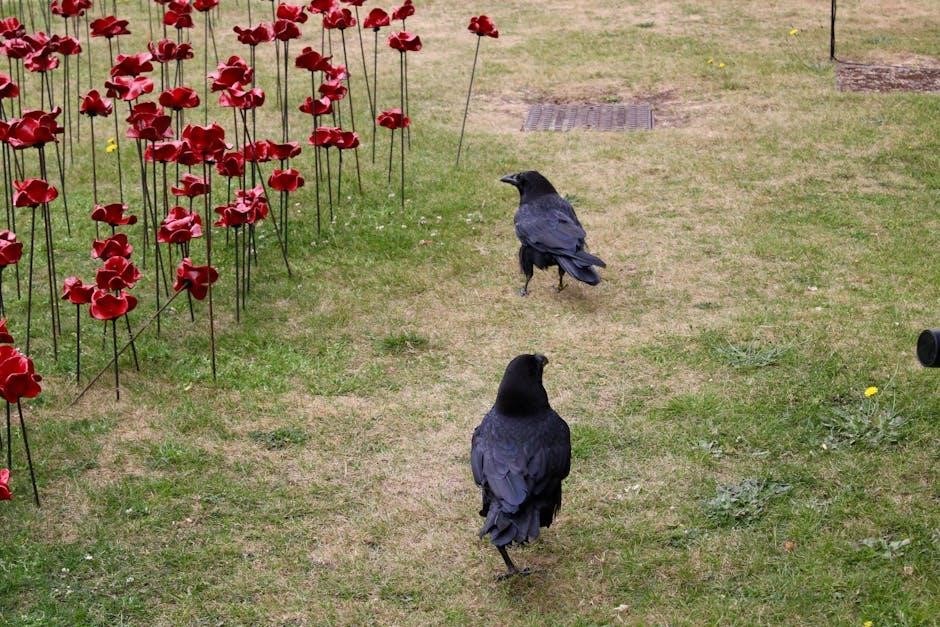
Migration Patterns
Pennsylvania is a key stopover for migratory birds, with species like the Western Tanager passing through during spring and fall. Peak migration occurs in April-May and September-October.
Seasonal Migration Routes Through Pennsylvania
Pennsylvania is a critical stopover for migratory birds, with many species passing through during spring and fall. The state’s location along the Atlantic Flyway makes it a key route for birds traveling between breeding and wintering grounds. Species like the Western Tanager, known for its vibrant plumage, are particularly abundant during spring migration. Birds often follow major landscapes such as the Appalachian Mountains and Lake Erie shoreline, utilizing these corridors for resting and refueling. Peak migration times occur in April-May and September-October, with waterfowl and songbirds dominating these periods. Pennsylvania’s diverse habitats, including wetlands and forests, support a wide variety of migratory species, making it a hotspot for birdwatchers.
Peak Migration Times and Species to Watch
Peak bird migration in Pennsylvania occurs in April-May and September-October, with spring and fall offering spectacular views of traveling species. During these periods, waterfowl, songbirds, and raptors are abundant. Species like the Western Tanager, known for its bright plumage, and the Black-and-white Warbler are commonly spotted. In spring, migratory birds like the Ruby-throated Hummingbird and Baltimore Oriole arrive, while fall brings an influx of waterfowl such as the Mallard and American Black Duck. Key habitats like Lake Erie shoreline and forested areas are hotspots for observing these species. Using a field guide or birding app can help identify these birds and enhance your migration-watching experience in Pennsylvania.

Conservation Efforts
Local organizations like the Pennsylvania Game Commission and Audubon Society work tirelessly to protect endangered species and habitats. Their initiatives focus on education, habitat restoration, and research to ensure avian biodiversity thrives.
Endangered Bird Species in Pennsylvania
Pennsylvania is home to several endangered bird species, including the Peregrine Falcon, which has shown recovery thanks to conservation efforts. The Northern Aplomado Falcon remains critically endangered and rarely sighted. Habitat loss and climate change pose significant threats. The Pennsylvania Game Commission collaborates with wildlife experts to monitor and protect these species. Efforts include habitat restoration and public education to raise awareness. The last passenger pigeon, once abundant, died less than 100 years ago, serving as a stark reminder of conservation’s importance. Protecting natural areas and supporting ecosystem management are vital for preserving these birds’ futures.
Local Organizations and Initiatives
Pennsylvania boasts a network of dedicated organizations and initiatives working to protect and promote bird conservation. The Pennsylvania Game Commission plays a crucial role in monitoring bird populations and enforcing wildlife protection laws. The Audubon Society of Pennsylvania actively advocates for habitat preservation and educates the public about bird conservation. Local birding clubs, such as the Pennsylvania Society for Ornithology, organize field trips and events to engage enthusiasts. Additionally, initiatives like the Pennsylvania Bird Atlas project document breeding species to inform conservation strategies. These efforts highlight the state’s commitment to safeguarding its avian diversity for future generations of birders and nature lovers.
Resources for Birders
Essential tools include field guides like the Pennsylvania Field Guide to Birds and apps like eBird for tracking species. Local birding clubs and online forums also provide valuable insights and community support.
Recommended Field Guides and Apps
For identifying Pennsylvania’s birds, the Pennsylvania Field Guide to Birds is indispensable, covering 124 common species with detailed descriptions and images. Apps like eBird and iBird Pro offer real-time sightings, identification tools, and birding community support. These resources help birders of all levels accurately identify species and stay updated on local birding trends. Additionally, local birding clubs often recommend regional guides tailored to Pennsylvania’s unique habitats. Combining field guides with apps enhances your birdwatching experience, ensuring you make the most of your time in the field. These tools are essential for both seasoned birders and newcomers alike, providing comprehensive insights into the state’s avifauna.
Local Birding Clubs and Events
Pennsylvania is home to numerous birding clubs and organizations that foster community and conservation efforts. Groups like the Pennsylvania Audubon Society and the Lehigh Valley Audubon Society host events, guided tours, and workshops. Annual events such as the Great Backyard Bird Count and Hawk Migration Day attract enthusiasts statewide. These gatherings provide opportunities to learn from experts, share sightings, and connect with fellow birders. Local clubs often organize field trips to key habitats, ensuring members experience the best of Pennsylvania’s avifauna. By participating in these events, birders can deepen their knowledge, contribute to citizen science, and support bird conservation initiatives across the region.
